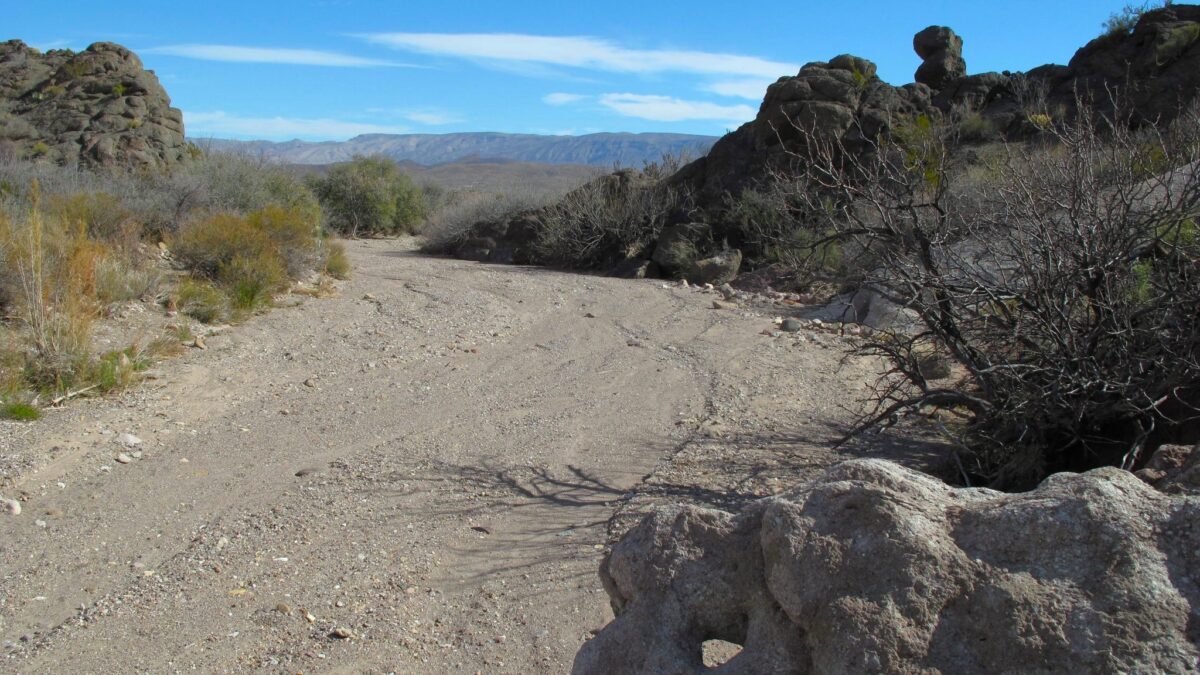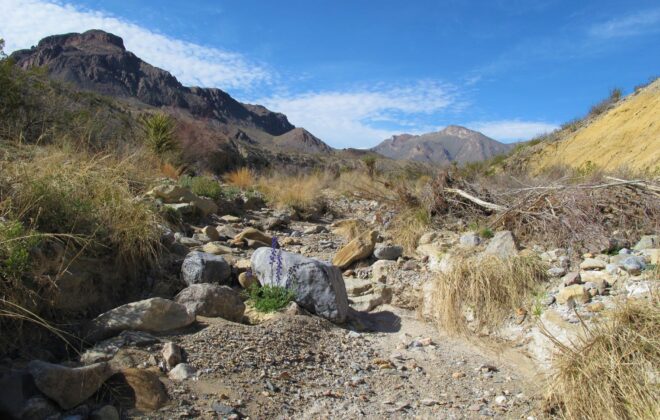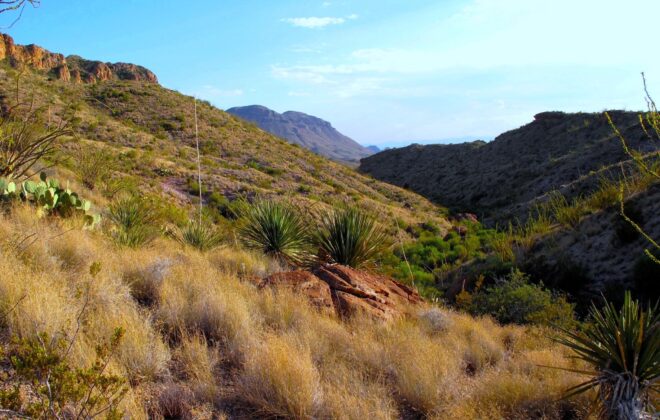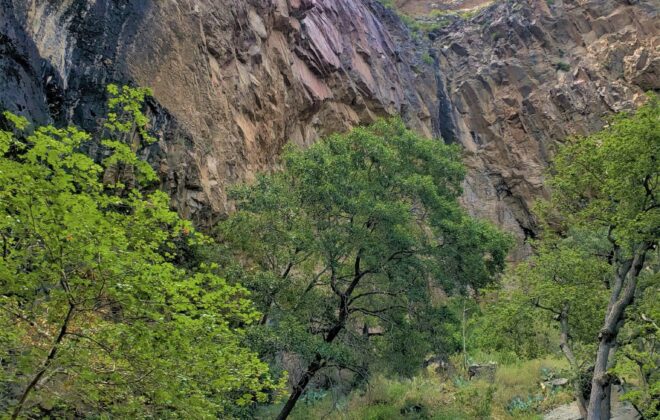Seeking and Finding Along the Big Yellow
SOMEWHERE IN THE LOWER BIG BEND:
Many have heard of Hannold Draw or at least of Nina Hannold. Her grave is one of the more frequented sites in the national park, sitting atop an eroded finger above the dry wash bearing her family name.
The Hannold continues easterly from this sad, solemn spot. Drifting along through pour offs, rock runs, weird geological formations as well as a possible grave or two before emptying into the Tornillo. Small pools of water can usually be found at or near the mouth, which makes for a pretty place to pack in a picnic lunch.
Of course the standard warnings apply: Do not venture here in hot weather or when storm clouds are about, and don’t get in over your head knowledge-wise. According to the obituary columns, the area specializes in killing people who are invariably later described as ‘experienced hikers.’ Please keep that helpful factoid in mind before challenging this desert on its home court.
Paralleling the Hannold just to the east and south is a close cousin, called the Big Yellow Arroyo. Once within its environs you can better understand the name. Eons of flood waters have cut deeply into the surrounding landscape, including through a series of low yellow hills to each side.
To me one of the more impressive sights is the one shown in the accompanying photograph. I refer to it simply as The Gap, a locale where those same waters have carved completely through a retaining wall of black volcanic rock.
Once upon a time, a fairly well-traveled wagon track ran through here from Dugout Wells. There lies another connection to the Hannolds, as Curtis Hannold regularly traveled certain sections of this road. During those years he served as the teacher for the settlement’s school.
Yet it is the natural wonders found here that is the most intriguing of all. Beyond the gap the creek bed reforms into a large basin, with numerous smaller washes joining in from higher ground all about.
This geographical collusion allows the wanderer to turn north toward the Tornillo Basin, or into a series of smaller arroyos emptying farther below the mouth of the Big Yellow. These can serve as a short cut if trying for Banta Shut-in from this direction.
On the horizon one can see the Dead Horse range, one of the most remote and least visited parts of the park. Closer in are the reddish slopes of the McKinney Hills.
Finally, close enough to reach out and touch, is prima facie evidence as to what those aforementioned flood waters can do. A hole in solid rock, the type of rock that does not yield easily to any outside force.
Like the rushing water itself, the whims of the desert brings forth a multitude of oddities and rarities found in few places on this earth.
As the Good Book says, “Seek and ye shall find.”
God bless to all,
Ben
Facebook: Ben H. English
Webpage: benhenglish.com
‘X’: Ben H. English



